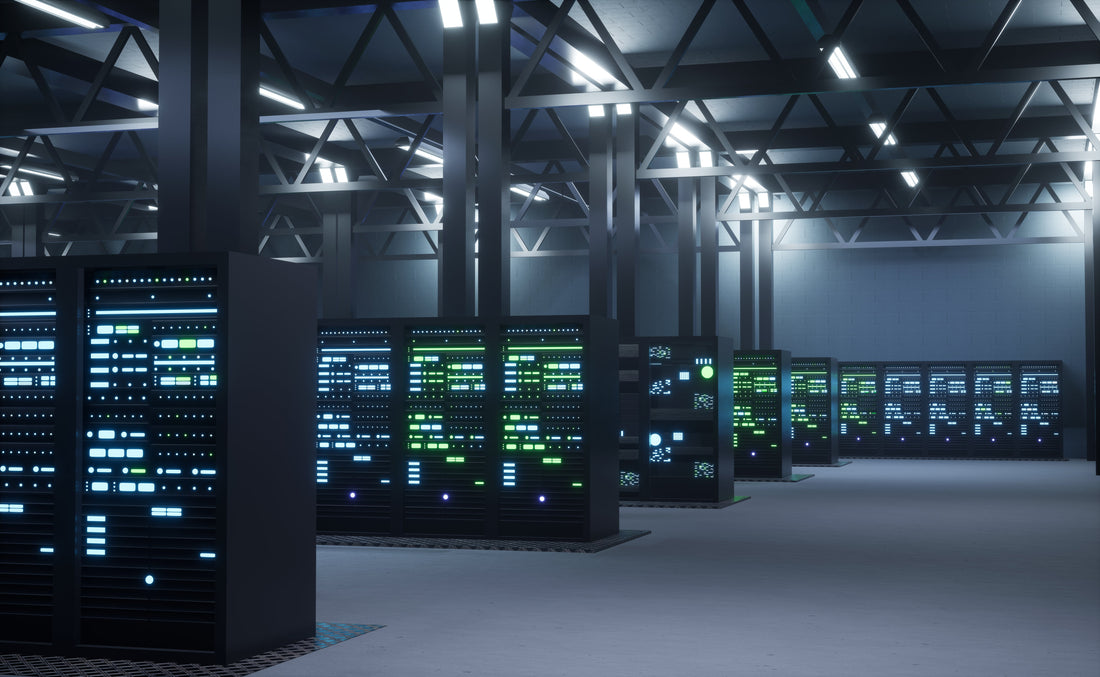In a world that’s always online, data centers quietly support almost every aspect of running a business and communicating with clients and stakeholders.
But as technology moves forward, there comes a time when older systems need to be retired - and it’s not something to take lightly.
Data center decommissioning is a sensitive and meticulous process that needs planning, data protection measures, and strict compliance with legal and environmental regulations.
What Is Data Center Decommissioning?
Data center decommissioning is the detailed process of retiring hardware like servers, switches, and storage systems in a secure, compliant, and environmentally responsible way. This is what organizations do when they upgrade their systems, move to the cloud, or consolidate infrastructure.
The goal isn’t always to shut down an entire data center - sometimes it’s just specific sections or devices. It also differs from relocation, where hardware is simply moved to another site.
Data Center Decommissioning Process
Each step in the decommissioning process matters:
Initial Assessment And Inventory
It all begins with carefully recording all the components that need to be removed, from servers and drives to switches and routers.
Technicians also need to note how devices are arranged, how they connect, and how they function together in order to make a clear blueprint that helps guide the entire process.
Stakeholder Communication
Because it’s an intricate process, everyone (from IT teams to legal and finance departments) involved needs to be kept in the loop and understand what’s happening and when.
Data Backup And Migration Plan
Before any cables are unplugged, all data must be backed up and safely transferred to new hardware or cloud services.
A typical (and safe) approach is the "3-2-1" backup rule:
The 3-2-1 Rule
3. Three total copies of data
2. Two of these copies are stored in different formats/locations
1. One copy is kept off-site
Data Destruction For Data Centers
Protecting sensitive data is a top priority. Simply erasing files isn’t enough, because formatted (and seemingly deleted) data can still be recovered.
So, here’s how data destruction for data centers is usually done - for complete peace of mind:
-
Data Wiping
Storage media is overwritten multiple times with random data, following strict standards such as the ADISA (Asset Disposal and Information Security Alliance) Threat Matrix Level 2.
-
Degaussing
A strong magnetic field is applied to magnetic media (e.g., HDDs), making the stored data unreadable.
-
Physical Destruction
It’s pretty straightforward: devices are crushed or even shredded.
Of course, this doesn’t mean you can just take your data center’s hard drives and smash them yourself.
The entire process is done by certified EOL (End Of Life) Management Providers who also provide you with Certificates of Data Destruction, confirming that data was handled properly - and proving that your organization is compliant.
Hardware Decommissioning
This is where it turns physical. The tech team empties racks, removes cables, uninstalls servers, routers, and storage devices. Any leased equipment is wiped clean and packed for return after removing asset tags and serial labels.
Asset Disposition And Recovery
Now that your drives’ data is gone for good and the hardware is out, the big question is: What should you do with it?
You have various options: equipment that’s still working can be reused, sold, or sent for refurbishment. Functioning parts from older or broken machines can be handed to parts recovery programs and gain some extra revenue.
Logistics And Secure Transportation
The next step is packing everything for transport: equipment is wrapped and palletized, and strict chain-of-custody procedures are followed from start to finish.
Bonus: Specialized providers use RFID tags or GPS trackers to ensure that nothing is misplaced or stolen during the move.
Final Reporting
Once everything is complete, you’ll receive a decommissioning report, including all information on the handling, recycling, or data center disposal, along with the final destination of each item.
Such reports often include:
-
Certificate of Data Destruction
-
Certificate of Recycling
-
Certificate of Sustainability
All these (typically online) documents help demonstrate compliance to auditors or regulators.
Data Center Decommissioning Compliance
Compliance isn’t just a box to check - it’s a must. Skipping this step can lead to serious penalties and legal risks - here’s what you need to pay special attention to:
Data Protection Laws
Regulations like GDPR and HIPAA require that personal or sensitive data be destroyed in a way that makes recovery impossible. And the truth is, the most vulnerable time for your data is when it’s in transition. That’s why it’s so important to follow proper destruction protocols.
Environmental Regulations
E-waste is a growing problem. Just 2 years ago, over 61 million metric tons of electronic devices were discarded - and that number is expected to hit nearly 75 million by 2030. Shockingly, less than 18% is recycled.
No one wants to contribute to this growing problem (or face an EPA penalty for that matter). So, you need to make sure that you dispose of data centers (and any electronics) the right way: through proper recycling, recovery of hazardous materials, and responsible vendor selection.
Industry Standards
Following respected standards helps build trust and show that you’re taking decommissioning seriously. Look for vendors certified under:
-
R2v3 for responsible recycling
-
ISO 27001 for data security
-
ISO 9001, 14001, and 45001 for quality, environmental, and occupational safety standards.
Choosing the right partner makes all the difference in ensuring everything is done above board.
Documentation And Audits
Keeping detailed records isn’t just smart - it’s required. If you ever face an audit, your documentation must show the full lifecycle of your equipment, from use to disposal.
How Green Wave Electronics Can Help
Decommissioning a data center doesn’t have to be complicated - or risky.
With Green Wave Electronics, you get a partner that knows the process inside and out: from secure data destruction to advanced hardware testing, repair, and refurbishment, their team handles it all with precision and care.
More importantly, we’re fully committed to sustainability.
At Green Wave Electronics, we prioritize reuse and responsible recycling, helping you reduce e-waste while staying fully compliant with industry standards.
If you’re planning a decommissioning project and want to do it right and stress-free, reach out to our team and take the next step with confidence. Contact us today.



